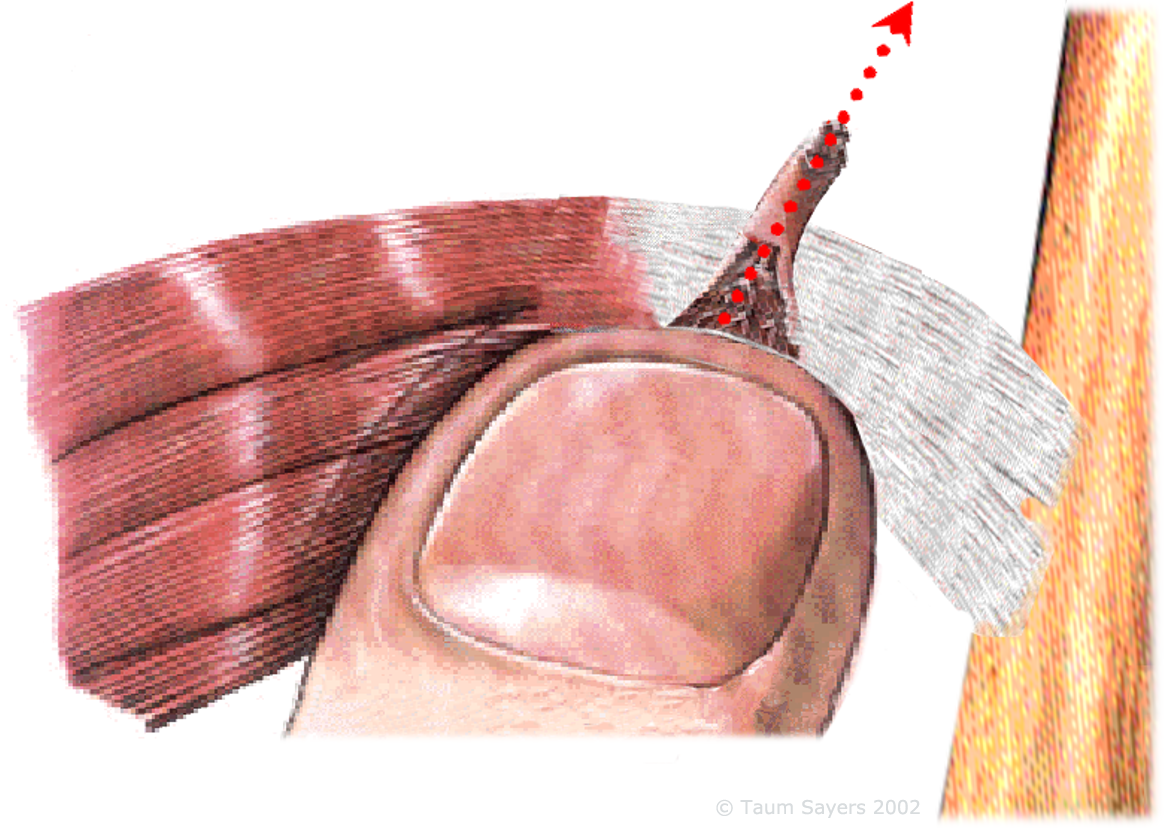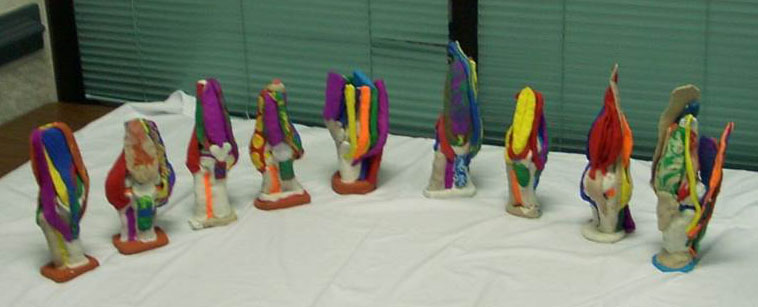If you ski, sooner or later you are going to have a knee injury. When you do, you will be probably be told that surgery is the only alternative. Yet many knee surgeries are less than satisfactory and can actually make things worse. For example, the common practice of scraping away the lining of the knee joints, the meniscus, can sometimes result in too much play within the knee, leading to a degenerative condition in which the knee becomes increasingly unstable and requires further surgery.
Two years ago, I was launching off cornices and skiing extreme terrain with total confidence. My ski buddies included World Cup racers and many of the stars of the extreme world. Then, towards the end of the season, I was hit by another skier, who fled the scene, leaving me with two blown out knees. I was told by doctors that once the swelling was gone, I would require knee surgery in one and possibly both knees.
My first action was to book an appointment with Taum Sayers, a therapist that works with world class skiers and members of the 49's football team. Taum treated me with something called "The Berry Method®," which I would describe as chiropractic manipulation for muscles. Taum pushed and pulled muscles and ligaments in my knees, manipulating them into position, much the way a chiropractor manipulates bones. The results were dramatic and I soon could walk without crutches on my injured knees.
About two weeks later, I met with Dr. Dean Stites, an orthopedic surgeon, for evaluation. Dr. Stites told me that he was surprised by the improvement and wasn't sure that surgery was still required. His recommendation was that I hold off on surgery and see how I did.
Muscle Management® for Knee Problems and Injuries.
I offer CE-approved knee classes in 3 stages. This combination of classes helps you fully understand the soft tissue components and enables you to work successfully with your clients knee concerns. Each can be taken independently.
4-hour class includes focusing on the following: Cruciate ligament, Biceps Femoris, Popliteus, Plantaris, Quadriceps femoris muscle group, Sartorius, Gracilis, Semitendinosus, Medial Collateral Ligament, and Medial meniscus.
6-hour class includes focusing on the following: Cruciate Ligament, Medial Collateral Ligament, Meniscus, Popliteus, Plantaris, Gastrocnemius, Biceps Femoris, Sartorius, Gracilis, Semitendinosus, Tensor Fasciae Latae, IT Band, Quadriceps Femoris muscle group, Articularis Genus, and Patellar Ligament.
The 13-hour class focuses on all of the above. In addition, each participant will create a clay model of the Knee joint and supporting tissue from the bones out. The bones serve as tactile landmarks for finding specific muscles with your hands and fingers. As each muscle, tendon and ligament is assembled and attached, rebalancing techniques to stretch, correct and manipulate that specific muscle will be presented, practiced, and reviewed.
This 3 step process accelerates your tactile abilities to understand and work with knee issues.
Class sizes are limited.
Taum began his 40+ year journey within Corrective Massage shortly after moving to Squaw Valley in 1976. The foundation of his work began in 1979 with his apprenticeship with Lauren Berry, RPT and Structural Engineer. This path has seen him invited to work with the US Ski team, the SF 49ers, professional runners, and cyclists.
For any and all ages, the focus is returning to pain-free living.
Taum's approach recognizes that the body is innately programmed to self-heal naturally when soft tissue relationships are balanced. His goal is to reduce the imbalances that interfere with that uniquely amazing ability.
LEARN MORE
Intention and Imagination.
"Repositioning"
Corrective Massage recognizes that muscles, tendons, ligaments, and viscera have optimum anatomical positions, functions, relationships, and movement patterns.
Correcting soft tissue misplacement and distortion is at the core of this amazing work.
Sometimes it's as simple as putting things back where they belong.
 A useful image is one of pushing or nudging dried strings of glue across glass with your fingertips. Consider that the attachment points of the tendon represent a concentration of force in one small area (the entire force of the muscle focuses tension on the bone through the tendon at its attachment). Because of this, the tension/force (pounds per square inch) at the attachment point is higher than at any point in the body of the muscle itself. There are pain receptors at the bone surface (periosteum), which in turn can make the insertion point very sensitive. It is thus helpful to expect these points to be tender and adjust your pressure accordingly. Consider that you are not so much repositioning the fibers to an exact position as much as you are introducing movement towards a balanced situation, thus reducing adhesions and removing distortion. The muscle tissue, upon having the 'duct tape' removed, will most often be able to nestle back to its optimal location. Note that one indication of a misplaced and distorted muscle is when the fibers tactilely 'stand out' with that all too familiar stringy/ropey feeling. Additionally, when muscle fibers are in their most functional position, they usually blend back in with the surrounding fibers and 'tactily disappear'.
A useful image is one of pushing or nudging dried strings of glue across glass with your fingertips. Consider that the attachment points of the tendon represent a concentration of force in one small area (the entire force of the muscle focuses tension on the bone through the tendon at its attachment). Because of this, the tension/force (pounds per square inch) at the attachment point is higher than at any point in the body of the muscle itself. There are pain receptors at the bone surface (periosteum), which in turn can make the insertion point very sensitive. It is thus helpful to expect these points to be tender and adjust your pressure accordingly. Consider that you are not so much repositioning the fibers to an exact position as much as you are introducing movement towards a balanced situation, thus reducing adhesions and removing distortion. The muscle tissue, upon having the 'duct tape' removed, will most often be able to nestle back to its optimal location. Note that one indication of a misplaced and distorted muscle is when the fibers tactilely 'stand out' with that all too familiar stringy/ropey feeling. Additionally, when muscle fibers are in their most functional position, they usually blend back in with the surrounding fibers and 'tactily disappear'.
The attachment points can serve as an important reference, so after addressing the surrounding regional tensions and distortions within the belly of the tender muscle, you can often return to a previously tender attachment to find it has relaxed. This can also serve to instill confidence in your client that there are benefits to the process.
By applying these techniques, you will have tapped some of the innate intelligence of the body, intentionally encouraging the muscle fiber to release chronic tension by overriding its protective state of contraction via the GTO, thus "reprogramming" it via the nervous system to relax. You will also have encouraged the muscle out of a distorted position and back towards a situation where it has a better opportunity to relax and repair.
This is an excerpt from Taum's article published in the July 2002 issue of Massage Magazine on Mid-Back Tension.*
Click here for the full article: "Intention and Imagination"
In retrospect, a more accurate title might have been
"Defending the Rhomboids."
Re-balancing the knee...One muscle at a time.
One of the unique components within The Berry Method® is in its recognition that soft tissues have an optimum natural functional position and can be misplaced due to trauma, adaptation, etc. Sometimes it is as simple as putting the tissue back where it belongs.
The Knee classes include both a regional and specific in-depth precision focus on Knee anatomy and corrective techniques to reduce pain and restore pain-free movement and function.

The information on this website and in Taum’s classes is not a substitute for professional medical advice, diagnosis, or treatment provided by your physician, therapist, nutritionist, or any other health care provider.
Consult Your Physician or Health Care Provider. We suggest you send them the link to this page.
Our intent is not to replace any relationship that exists or should exist between you and your medical doctor or other health care professional.
You acknowledge that you take full responsibility for your health.
Once again, you know best your own body and its limits.
Respect those limits.
